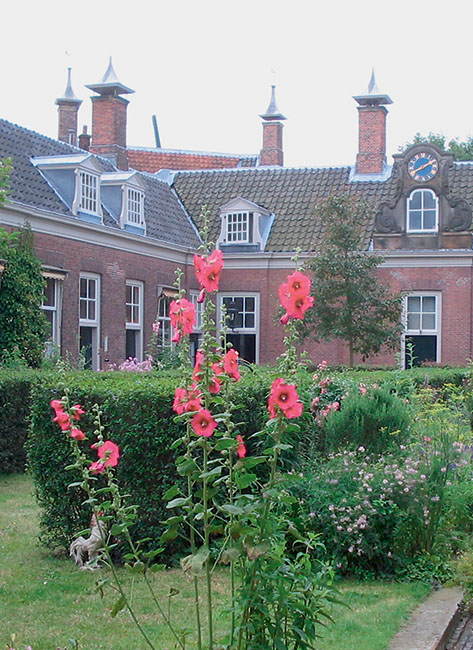Dutch Almshouses
The Convergence of Rich and Poor in Urban Treasures
DOI:
https://doi.org/10.7480/dash.01.4522Abstract
A hof is an architectural unit of buildings surrounding a court with restricted traffic (Van Dale Dictionary of the Dutch Language)
Throughout the years, the hof has regularly been proposed as a model for urbanization in the Netherlands. In 1916, for example, the architect Mels Meijers pointed to the hofjes van liefdadigheid dating from the Middle Ages as the only Dutch example of residential blocks suited to the public housing task ensuing from the Dutch Housing Act of 1901. He predicted that the hof model would ‘find a new application’.
The hof is also receiving lots of attention in contemporary residential architecture. One might propose the economic argument of high density in inner cities as reason for this, but there are also other considerations. Courts offer a semipublic, closed environment in which there are no cars. The social safety offered by this typology makes the hof increasingly attractive in a nation whose population is growing older and more individualized. The recent interest shown by architects and developers in the architectural representativeness of the residential environment is also a possible reason for the revaluation of the court model.
Hofjes van liefdadigheid are a typical Dutch phenomenon. This particular form of charitable housing for the poor, in which a courtyard is surrounded by almshouses, has existed since the 14th century and became popular in the Dutch Golden age of the 17th century and in the 18th century. The cities of Amsterdam, Leiden and Haarlem have the most hofjes, but they can be found from Groningen to Maastricht. A special characteristic of the hofje van liefdadigheid is that charitable housing was coupled with the fact that it represented the founder. Rich people from the upper classes who had no heirs would, while still alive, bequeath their capital to the construction of a new hofje, where poor elderly people (usually women) could live for free. Most of the hofjes are named after their founder, whose name would thus live on and whose reputation would be exemplified by the architecture. The ‘plainest’ of the hofjes are tucked away on an inner parcel of land and only accessible from the street via a nondescript gate. The ‘richest’ of the hofjes manifest themselves as stately buildings along the canals.
Hofjes van liefdadigheid are a typical Dutch phenomenon. This particular form of charitable housing for the poor, in which a courtyard is surrounded by almshouses, has existed since the 14th century and became popular in the Dutch Golden age of the 17th century and in the 18th century. The cities of Amsterdam, Leiden and Haarlem have the most hofjes, but they can be found from Groningen to Maastricht. A special characteristic of the hofje van liefdadigheid is that charitable housing was coupled with the fact that it represented the founder. Rich people from the upper classes who had no heirs would, while still alive, bequeath their capital to the construction of a new hofje, where poor elderly people (usually women) could live for free. Most of the hofjes are named after their founder, whose name would thus live on and whose reputation would be exemplified by the architecture. The ‘plainest’ of the hofjes are tucked away on an inner parcel of land and only accessible from the street via a nondescript gate. The ‘richest’ of the hofjes manifest themselves as stately buildings along the canals.
This article gives a brief overview of the charitable hofje as an architectural and urban artefact. The representative aspect is discussed on the basis of three hofjes in Haarlem, each with a distinctive character, that were founded by wealthy private individuals. The fourth example in this analysis is the Proveniershof in Haarlem, which was established by the municipal government. This overview is predicated upon a number of spatial elements that are considered characteristic of the hofje typology. They are found in all four examples, albeit in varying forms, materials and similarities. Moreover, the hof’s location in the urban fabric and its accessibility has been an important factor in the analysis of the hofjes in our study.



